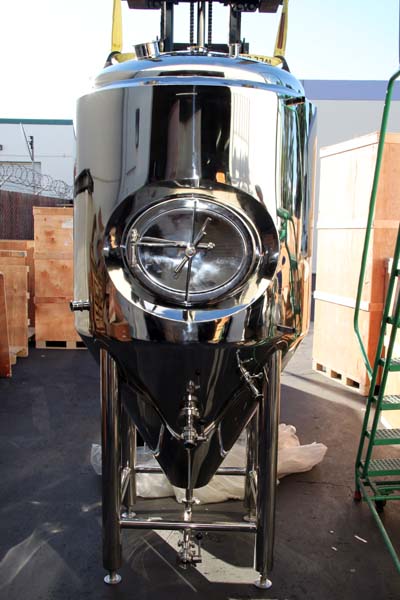

Looking at it from a homebrewing perspective, why would you want to change from your basic pail or inefficient round fermenter? Quite frankly because it has never been as affordable to brew at home on similar vessels as the professionals do. Even the most vigilant brewers fall into unintended traps.” Every time you transfer your brew, you remove it from the sealed-off safety of its home vessel, thus exposing it to contaminants and oxygen. You wait for weeks, only to taste your final beer and find it riddled with off-flavours. Oxidation and Infection are a brewer's worst nightmare. “Minimize Risk of Oxidation and Infection. If world renown Northern Brewer retailer recommends true conical fermenters, they can’t be wrong!:
#Anvil crucible conical fermentor professional
True 70 degree angle conical fermenters such as the Keg King Apollo, Keg King 60L Fermenter and professional Stainless Still Cylindroconical fermentation vessels: Non true conical fermenter pretending to be true fermenters (not angled enough to be called a true conical fermenter) Round fermenters producing lesser quality beer (remember my daughter’s drawing?)
#Anvil crucible conical fermentor free
This allows most of the yeast to be separated, leaving the beer comparatively free of yeast. An angle of minimum 70 degrees is required to allow the yeast to settle into the base of the vessel at the completion of primary fermentation. “An important characteristic of these vessels is the steep angled cone at the base. True conical fermenters are described as having a steep angle of 70 degree at the bottom which is required to achieve best results Brookes and Roger Stevens, the authors establish that true conical fermenters a more cost effective, higher fermentability and better ingredients to beer ratio than non true conical fermenters. In their book “Brewing Science and Practice, 2004” by Dennis E. Now let’s talk about why conical shape is important and we will cover this in two simple points: the science behind it and the homebrewing aspect. So if an 8 year old can tell the difference between a cone and an oval, I’m sure customers can too. Spelling aside, I think her drawing is pretty clear. As a fun exercise, I asked my 8 year old daughter to draw both a conical and oval shape without explaining to her why and this is what she drew: Over the years, many competitors have tried to copy our products and some have even tried to pass their products as conical shaped even though they are clearly round. Pro-style welded 1.When Keg King introduced the first PET Conical Fermenter in 2016, we designed it specifically to help brewers achieve peak performance and flavour profiles in their favourite beers.Rotating racking arm is ideal for transferring clear beer, leaving the yeast and sediment behind.Available in 7 gal and 14 gal sizes, perfect for 5 and 10 gal finished batch sizes.The rotating racking arm and large pro-style tri-clamp bottom dump will have you racking crystal clear beer and harvesting yeast like a pro! Let the Crucible™ be the showpiece of YOUR brewery!

Looking to ferment like the Pro’s? The new ANVIL Crucible conical fermentor is the hands-down best value in a stainless steel conical fermentor on the market.


 0 kommentar(er)
0 kommentar(er)
